Abundance: Uncommon
What: cap, stem
How: cooked
Where: shaded hard woods
When: summer
Nutritional Value: vitamins, minerals, fiber
Dangers: beware of poisonous mimic Golden Milk Cap (Lactarius alnicola)
COLLECTING MUSHROOM REQUIRES 100% CERTAINTY. WWW.FORAGINGTEXAS.COM ACCEPTS NO RESPONSIBILITY FOR IDENTIFICATION ERRORS BY ANY READERS.
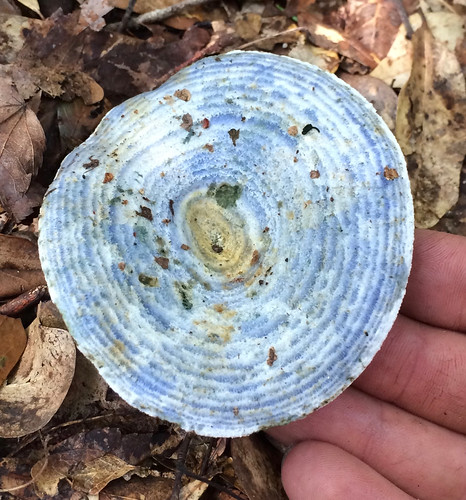
The gills are closely packed, stop at the stem, and don't run the etire length from cap edge to stem.
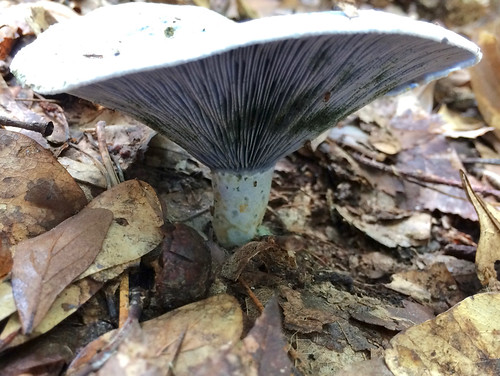
The gills will turn dark when touched.
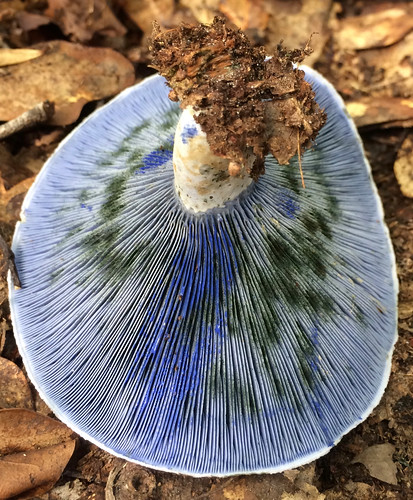
The interior of the cap and stem are blue.
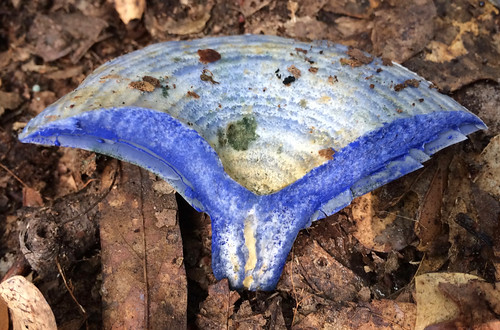
The cap will weep a blue "milk" when cut or damaged.

The blue milk will stain things.
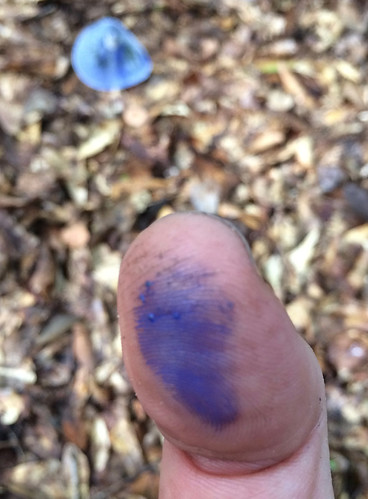
Older mushroom, having lost its circular shape.
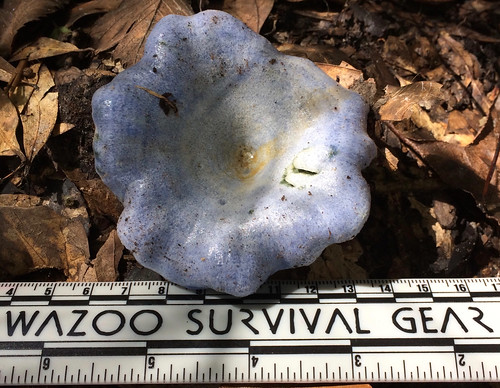
Indigo Milk Cap mushrooms are a summertime treasure in the woods of Texas. Their distinctive blue color makes them stand out against the leaf litter below shaded, moist environs of hardwood forests of oak, hickory, and elm. It's rarer but not impossible to find them in heavy pine forests. They usually don't appear in large numbers close to one another, preferring a more solitary life rather than a plentiful colony. Also, they do not grow on dead or living wood.
Damage to the cap or stem will produce a copious bleeding of the blue milk from which the mushroom gets it's name. This milk will turn a dark green as it's exposed to air. The inner surface of the mushroom will change from blue to green in the same manner.
The cap is a silvery color with blue rings. When younger the cap is circular in shape and domed. The edge of the cap will curl under the mushroom, partially hiding the gills. As it matures the cap edge spreads out and lifts, creating a depression in the top center of the mushroom and it loses its circular shape, becoming wavy. Indigo Blue Milk Caps have true gills that are made of a different tissue than the cap itself. It produces a pure white spore print. These gills are "adnate" which means they stop at the stem. The stem (aka stipe) is bare, with no remains of a cover or volva.
Cook Indigo Milk Caps as you would any other fleshy mushroom. They do well in everything from simply sauteing in butter to deep frying. The milk won't color sauces blue, unfortunately.
Other members of the Lactarius family can be poisonous. One common one is the Golden Milk Cap (Lactarius alnicola). It has the same shape, rings, and size as the edible Lactarius indigo but it has a gold color and weeps white milk.
Poisonous Golden Milk Cap (Lactarius alnicola) has the same shape and structure as the Indigo Milk Cap but is yellow/gold instead of blue.

Underside view.

Side view of poisonous Golden Milk Cap.
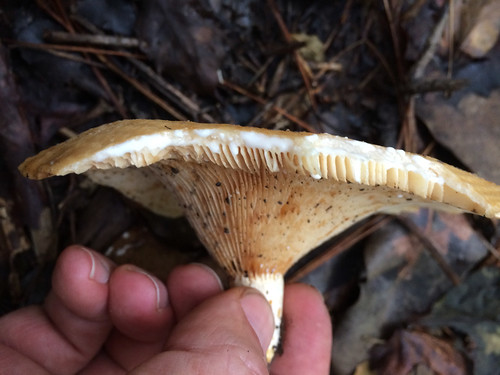
Crosscut view of poisonous Golden Milk Cap.

Buy my book! Outdoor Adventure Guides Foraging covers 70 of North America's tastiest and easy to find wild edibles shown with the same big pictures as here on the Foraging Texas website.

